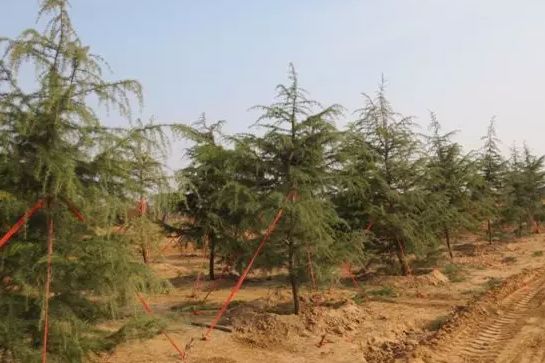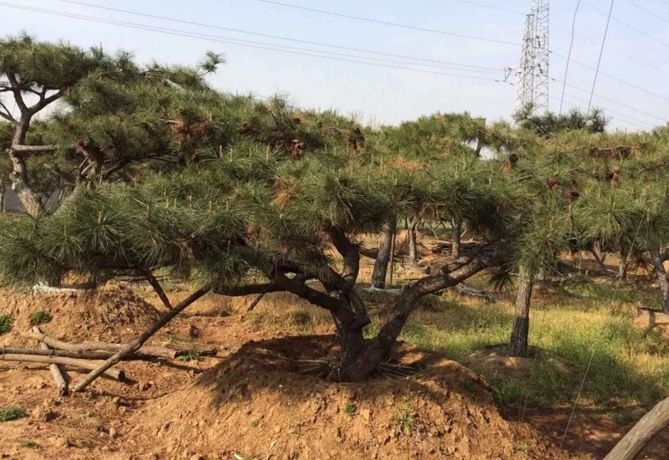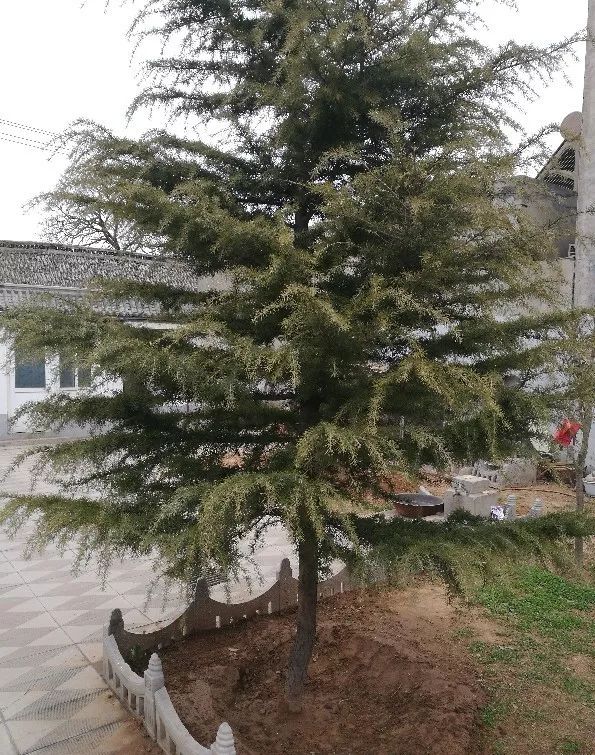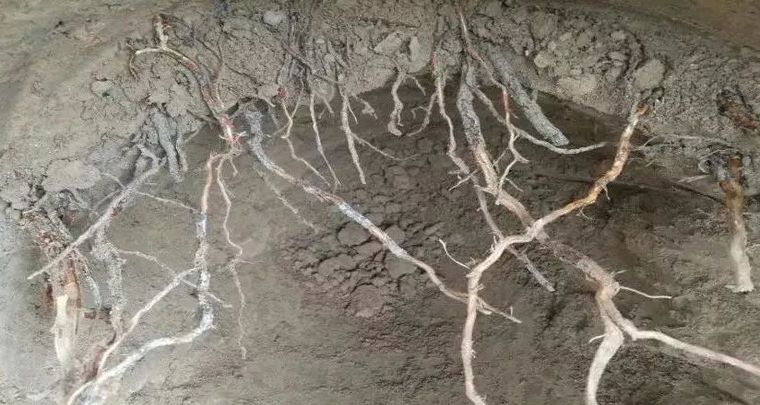



Author:Pine Trees pubData:2019/5/13 10:52:01
Many friends have reported to the editor that the pine trees planted last autumn have experienced widespread needle drop during this period, with some having completely died. This is primarily due to the specific physiological characteristics of pine trees, where improper transplanting can lead to mortality. Therefore, using the correct transplanting methods is crucial.

Here, the editor summarizes some important points to consider when transplanting pine trees, hoping to provide some assistance.
The most critical factor in transplanting pine trees is to correctly determine the timing for digging and planting. The most active growth period (root development) for pine trees is from February to April, making this the most suitable time for transplanting. Additionally, as the saying goes, "Cold pines, hot cypresses," pine trees should be planted in cooler conditions. Generally, late autumn is more effective than early spring, while early spring is better than late spring or early summer.
Since pine trees prefer acidic soils and are sensitive to waterlogging, it is best to choose well-aerated, well-drained, mildly acidic soil for transplanting. Soil with high alkalinity may lead to tree mortality.
Moreover, it is essential to retain as much of the original soil and fine roots as possible around the tree's root system. This minimizes the differences in the root environment for the pine trees.

It is advisable to use smaller seedlings for transplanting, as smaller ones generally have higher survival rates, although they may have poorer landscape effects. For larger pine trees, healthy specimens from nurseries tend to be more expensive. Trees from mountainous areas often have better shapes due to longer growth periods and are relatively cheaper compared to similarly sized nursery trees. However, the survival rate of mountain seedlings is often quite low:
Trees that are directly dug from the mountains are usually naturally seeded and have grown for at least 20 years. These trees have not been previously transplanted, and their roots are deep, with less developed lateral roots. When excavating, their root systems may not be complete, leading to minimal soil adhering to the roots and significant damage. Planting such trees directly after being dug can result in low survival rates.
In summary, the main reasons for the low survival rate of mountain seedlings are:
Severe Root Damage: Many roots may be severed during excavation, resulting in insufficient fine and absorption roots. Changes in planting conditions further hinder the roots' ability to absorb water and nutrients necessary for the leaves and branches.
Significant Environmental Differences: These plants have adapted to the temperature, humidity, soil nutrients, and pollution-free environment of the mountains for over 20 years. After moving down, everything changes, and coupled with poor root conditions, the difference in soil conditions also affects their survival.
Inadequate Post-Planting Management: After transplanting, poor management such as untimely watering, insufficient watering, or excessive watering, along with not trimming damaged roots, can lead to an imbalance between the crown and root system.

Thus, mountain seedlings should undergo artificial acclimatization before transplanting:
Due to significant root damage during excavation, it is essential to appropriately prune the crown. Since pine trees exhibit whorled branching, pruning should stagger the different whorled branches to ensure a proper root-to-crown ratio.
There is a saying regarding planting pines: "Ten deaths, nine drownings." Searching online about the physiological characteristics of pines reveals that they prefer dry conditions and are sensitive to waterlogging. Therefore, watering must be moderate; the first and second watering should ensure thorough saturation, but subsequent watering should be controlled. Unless the soil is exceptionally dry, further watering should be avoided.
Particularly for pines planted on lawns, it is common for them to die due to overwatering. To prevent excess water, consider shallow planting at the time of installation, ensuring that the planting hole is backfilled and compacted. One-third of the root ball should be buried, with the surrounding soil added afterward. In cases of excessive watering, drainage should direct excess water to lower areas. Maintaining soil moisture levels between 7% to 14% is most beneficial for pine growth; exceeding this level, especially reaching 16% moisture content for extended periods (over 10 days), can lead to pine tree death due to root respiration blockage and oxygen deprivation.
For pines that have already been planted too deeply and are showing signs of problems:
Excavate the Planting Hole: Check if the roots are completely rotted or dried to determine if there is still a chance for recovery.

For Roots That Are Not Blackened or Dried: Remove the decayed roots, then refill the hole. Use rooting powder, multi-fungicides, or similar products mixed with water for root irrigation, repeating this a month later.

For Pines Planted Too Deep: Loosen some soil around the tree and use tools like a Chinese shovel to create several aeration holes around the planting hole, adjusting the number of holes based on the tree size. The holes should be about 4 to 5 cm wide and 50 cm deep to improve soil aeration, facilitate moisture evaporation, and promote new root growth.
Avoid Nutritional Injection for Ailing Pines: It is not advisable to use nutrient injection liquids for trees that are showing problems. This is mainly because coniferous trees exhibit a phenomenon known as "oil flushing" during certain periods, so injections should be avoided during this time. If trees are in the early stages of oil flushing, two methods can be employed for liquid application:
a. Change the injection site from the stem, typically chosen for broadleaf trees, to the roots, focusing on thicker primary roots for injections.
b. Use activation liquid instead of infusion, which refers to the activation liquids commonly found in the market.
In High-Temperature Seasons: Spray the branches and leaves, ensuring that water does not drip into the planting hole, to reduce moisture loss.
Ensuring the root ball is as intact as possible, avoiding deep planting, maintaining moderate watering, and ensuring adequate root aeration are essential factors. By mastering these points, the survival rate of transplanted pine trees can be significantly improved.
Copyright © 2018 .Pine Tree Network - Landscape Pine Trees - Black Pine Trees All rights reserved. 技术支持:华邦网络
潍坊华邦网络科技有限公司旗下网站 网站备案号:鲁ICP备14027302号-14